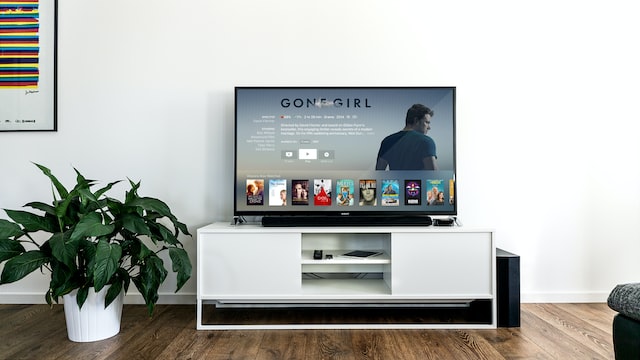If you want to connect your Mac to a TV as an external display or watch video from your MacBook on a Smart TV, here we show you how to connect a Mac to a TV including with the latest M1, M2 and M3 Macs.
Connecting a TV to your Mac is a convenient way to watch video streaming services such as watching Netflix from your Mac on a Smart TV.
Alternatively, you can also use a TV as an external monitor for working or gaming on.
These ways of connecting a Mac to a television, Smart TV and HDTV work on all models of Mac including MacBook Pro, MacBook Air, Mac Mini, iMac, Mac Studio and Apple Silicon Macs.
You May Also Like:
Table of Contents
Connecting A Mac To A TV With A Cable
The easiest way to connect your Mac to a TV is by using an HDMI cable.
However there are several different ways of connecting it depending on which ports your Mac has.
The main ways to connect a Mac to a Smart TV with a cable are:
- Using an HDMI cable from a Macs HDMI port – this is by far the easiest and best way to connect a Mac to a TV if your Mac has an HDMI port.
- Using a Thunderbolt port (requires a Thunderbolt to HDMI adapter known as a MiniDisplayPort to HDMI adapter)
- Using a DVI port (requires a DVI to HDMI adapter)
Which options are available to you will depend on which Mac you have.
1. Find Out Which Ports Your Mac Has

You first need to check exactly which ports and cables are on your Mac to connect to a TV with.
If you’re not intending to use a cable and want to connect your TV wirelessly to a Mac you can skip to this part but for all other wired connections, read on.
If you know what you’re looking for, you can check which ports you have by doing a physical inspection along the sides of your Mac or alongside the back of a Mac Mini or Mac Studio where the ports will be.
If you’re not sure which ports you have on your Mac, there’s an easy way to find out.
- Click on the Apple logo in the top left of your screen and select About This Mac.
- Double-click on the serial number then copy and paste it into the Apple Tech Specs search page to find out exactly which MacBook Pro and ports you have.
- Scroll down to the Charging and Expansion section where you’ll see the exact ports your Mac has. In this example, we’re looking at the 16 inch M1 MacBook Pro.
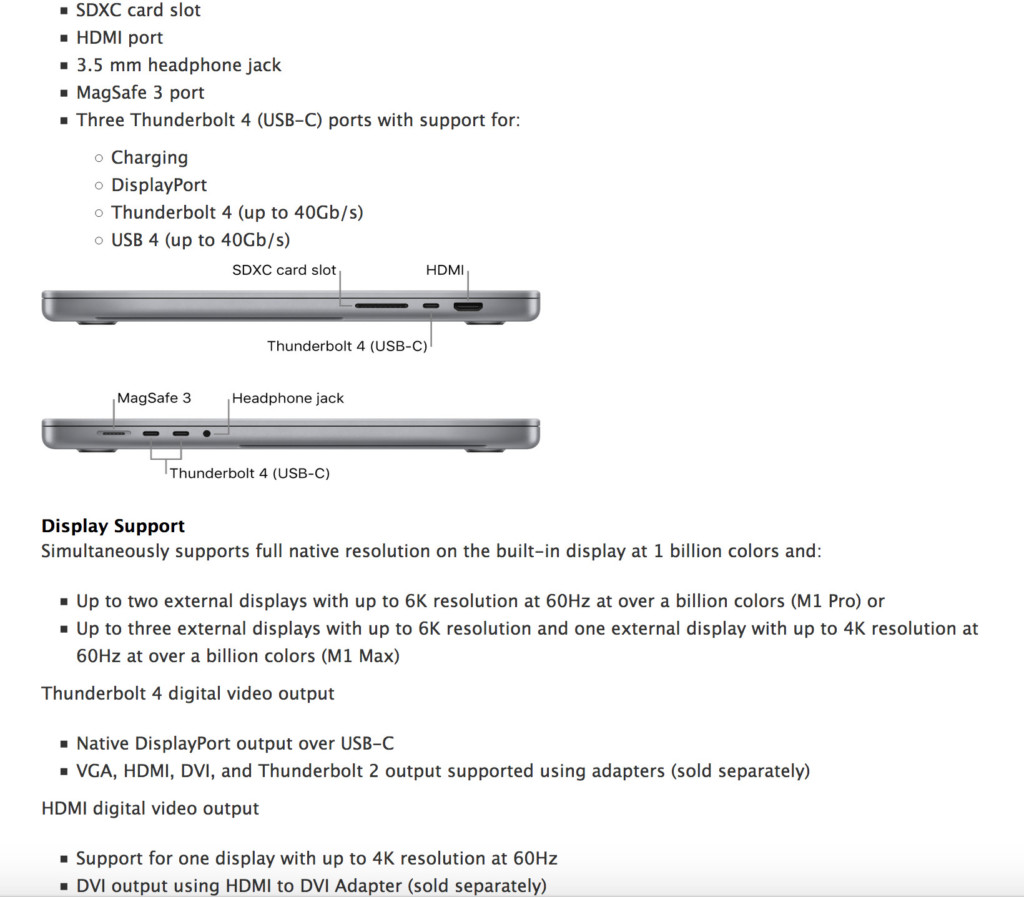
The specs will also show you exactly how many displays your Mac will support if you want to connect an external monitor to your Mac.
In this example we can see there are two main ports to connect a TV to the Mac: Thunderbolt 4 and HDMI.
HDMI is the easiest way to connect TV’s and Smart TV’s to a Mac via cable.
HDMI supports both video and audio so will also allow you to play audio from your Mac to a TV.
However, not all Macs have an HDMI port but most recent models do.
For example, you can connect a 2021 MacBook Pro 14 or 16 inch model directly via HDMI but not the 2020 M1 MacBook Pro.
All Smart TVs have HDMI ports on the back which makes it very easy to connect them to a Mac. Nowadays, most Smart TV’s have at least 3 HDMI ports but some have more.

Bear in mind if you need lots of space between your Mac and Smart TV, then most of the HDMI connection cables are quite short and you may need to buy a longer one.
If you choose to connect via Thunderbolt, then you’ll need a Thunderbolt to HDMI adapter which is known as a MiniDisplayPort to HDMI adapter.
However, in the specs for the MacBook Pro, we can also see that that you can connect this Mac to a TV via USB-C which uses the same cables as Thunderbolt but isn’t quite as fast.
For an understanding of the difference between Thunderbolt and USB-C ports check out our guide to USB-C vs Thunderbolt.
Finally, the specs also show that you can connect this Mac to a TV via VGA, DVI and Thunderbolt 2 but these will all require adapters.
Generally, we don’t recommend using an adapter to connect a Mac to a TV as the cleaner the connection natively via HDMI, the more reliable and trouble-free using an TV with your Mac will be.
However, depending on the TV or projector you’re trying to connect to the following adapters are available:
- A VGA TV or projector requires a USB-C VGA Multiport adapter
- A DisplayPort or Mini DisplayPort TV requires a USB-C to DisplayPort or Mini DisplayPort adapter
- A DVI TV or projector requires a USB-C to DVI adapter
Note that Macs can only support the older HDMI 2.0 standard not the more recent HDMI 2.1 standard and you can read more on this here.
2. Connect & Configure The TV
Once you’ve chosen which port to connect the Mac to your TV with, you then need to connect it with the appropriate cable.
- Plug in the power to your TV and connect it to your Mac using an HDMI cable or HDMI cable with adapter if necessary. Once you’ve successfully connected the TV and your Mac has recognized it you then need to set it up correctly.
- Go to System Preferences > Displays and you’ll see the TV that you’ve connected.
You’ll now see options to set how the Mac display and your are arranged such as left to right or right to left, screen mirroring, contrast, resolution and more.
The principle or main display on your Mac is indicated by the one that has a white bar above it.
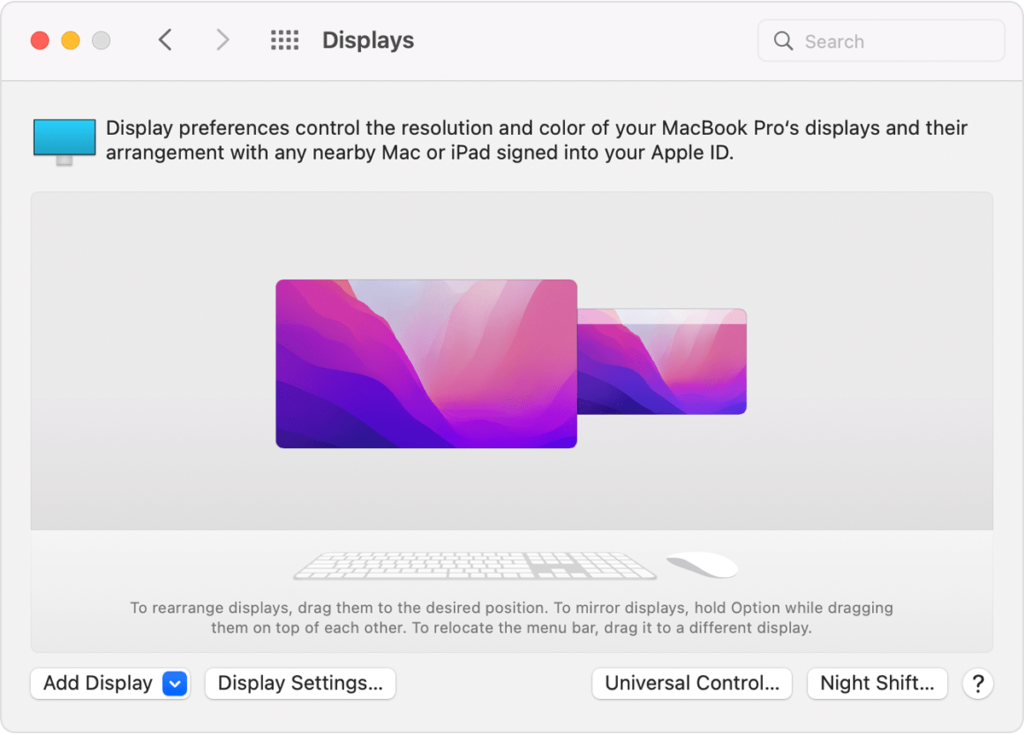
Screen Mirroring simply mirrors your MacBook Pro screen to the TV so they both show the same thing which is ideal if you want to watch Netflix from your Mac on the TV.
Alternatively, if you want to to use the TV as an extension of your screen to give you more screen estate for working, then you need to turn off Screen Mirroring.
You can also change the resolution used by your TV to display your Mac’s screen.
We recommend changing this to “Default for Display” for the optimum settings.
“Scaled” will match the resolution of your Mac but if you’re finding that a scaled resolution is making everything look extremely small or blurry on on the TV, try some of these solutions.
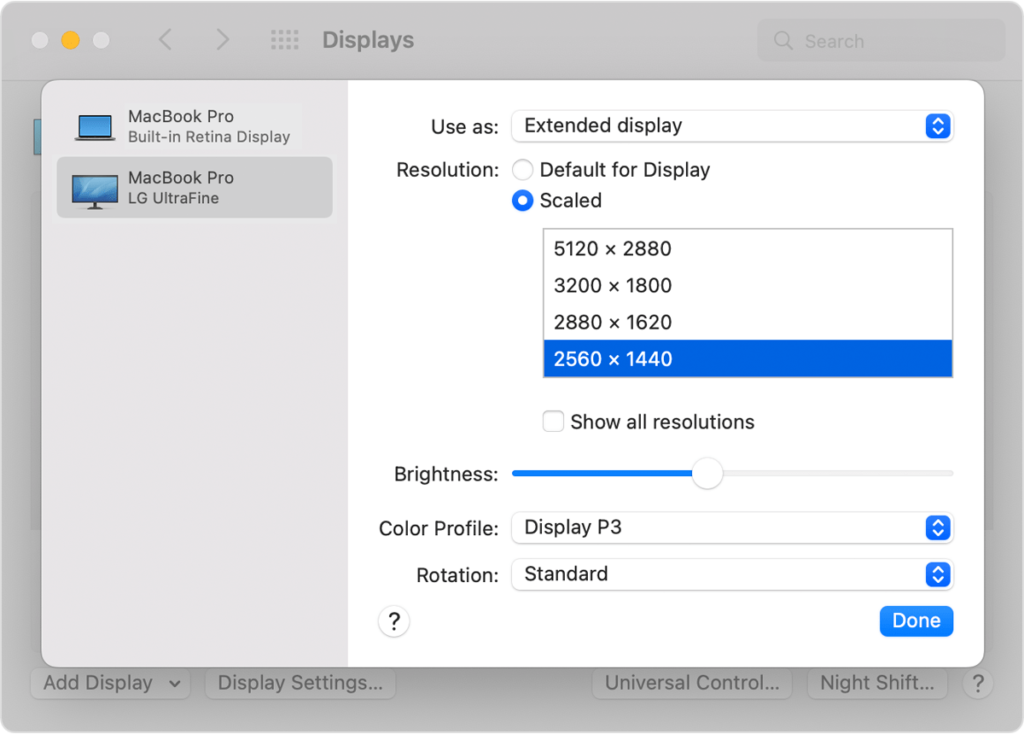
3. Connecting A Mac To A TV Wirelessly
If your Smart TV supports Apple AirPlay, then you can easily connect your Mac to it wirelessly. You can check whether your Smart TV is AirPlay compatible here.
If you have an Apple TV connected to your Smart TV, then you can use the AirPlay in your Apple TV.
Here’s how to connect a Mac to a TV wirelessly.
- Make sure both your TV and Mac are connected to the same WiFi network. If they are not, then AirPlay will not work as it uses your WiFi connection to connect your Mac and Smart TV wirelessly.
- Go to the Apple logo in the top left corner and click on System Preferences.
- Click on Displays.
- In the drop down menu, select your Smart TV from AirPlay Display at the bottom of the Display settings which by default is set to Off.
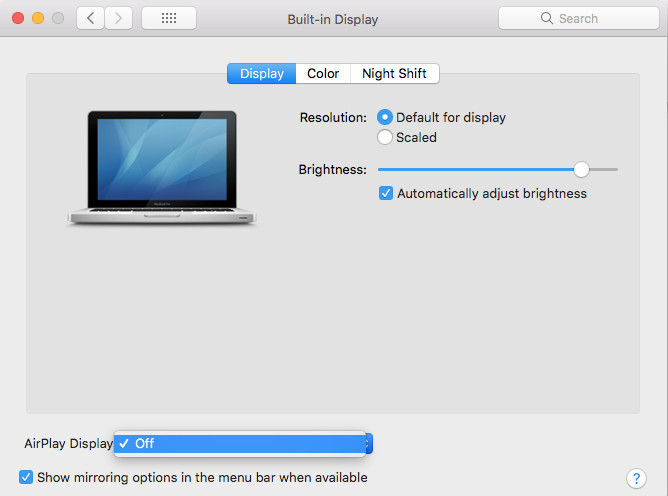
When the wireless connection is made, your TV may go black for moment and then your Mac display will appear on the Smart TV screen.
If you want to use your Smart TV as a second display for your Mac, then click on Gather Windows to bring all your windows together and extend your Mac’s display using the TV as a second monitor.
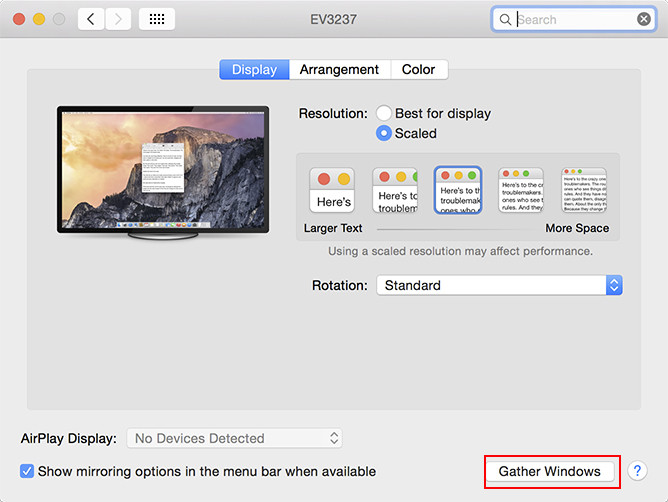
If you simply want to mirror the Mac display on the TV such as to watch a film on Netflix, then just click on the Arrangement tab and select Mirror Display.

If the TV doesn’t support AirPlay you can still connect to it using Screen Mirroring. To connect your Mac wirelessly to a TV that doesn’t support AirPlay:
- Go to Control Center by clicking the stack symbol in your Menu Bar.
- Click on Screen Mirroring and in the pop up menu that appears, select the TV you want to connect to wirelessly.
- If you want your TV to play sound from your MacBook click on the Sound transmit symbol next to the Sound slider to send the audio to your TV.
- If you have an older Mac or TV, then you may need to connect another male-to-male stereo audio cable between your Mac’s headphone jack to the headphone jack in your TV to hear sound.
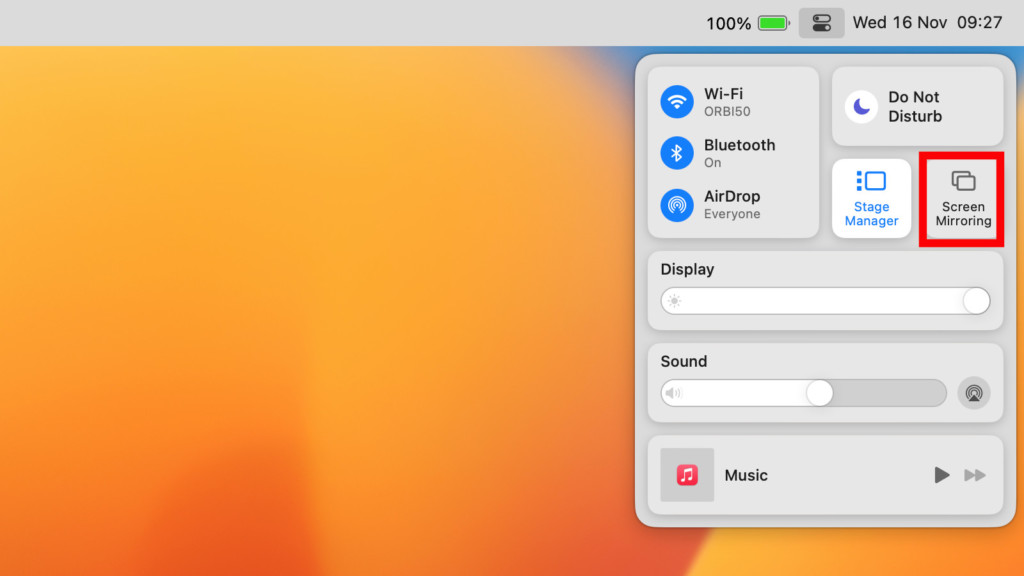
If The TV Is Not Working With Your Mac
If your Mac fails to recognize the TV or you can only see a black screen, try the following:
- Try connecting the TV to your Mac while it is turned off then switch the Mac on
- Double-check that all cables are securely connected
- Check you have updated to the latest version of macOS which is currently Sonoma
- Go to System Preferences > Displays and press the Alt or Option key to reveal the “Detect Display” option. Your Mac will then try to recognize the TV connected to it.
If you’re still having problems getting your Smart TV to work with a Mac, try some of these solutions which are designed at troubleshooting external monitors but some of which can also be applied to Smart TVs.
Can I Close The Lid On My MacBook Connected To A TV?
You can close the lid on a MacBook Pro or MacBook Air while your Mac is connected to a TV using a cable but you can’t when connected wirelessly.
This is known as “clamshell” mode and also allows you to use an external keyboard and mouse even if your MacBook lid is closed.
However, to activate clamshell mode you need to go to System Preferences > Battery > Energy Saver > Power Adapter and move the slider to Never to enable this mode.
This prevents your display going to sleep even if you close it both when connected to the power cable and battery.
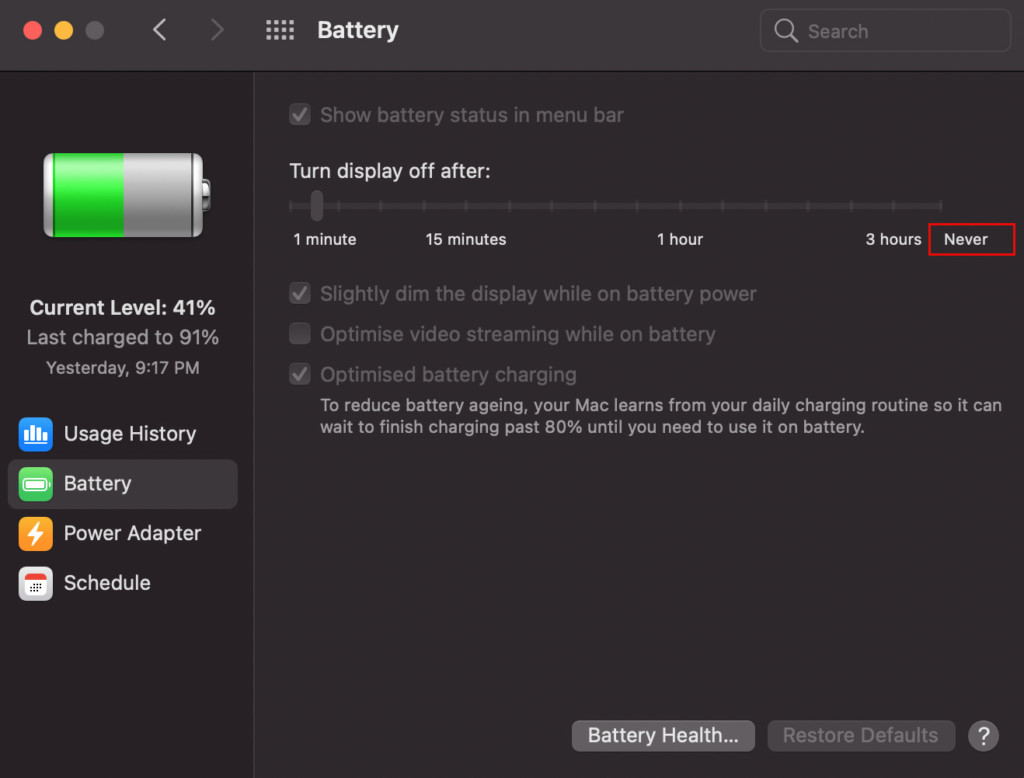
In macOS Ventura or later, this option has moved to Display > Advanced Settings.
If you don’t do this, your TV screen will go black when you close the lid on your MacBook.
If your Mac is connected to a TV wirelessly, clamshell mode does not work and your TV will go off when you close the lid on your Mac.
Do Macs Support HDMI 2.1?
Currently, the only Macs that support HDMI 2.1 are the new M2 MacBook Pro and M2 Mac Mini.
One of the big upgrades in the new M2 MacBook Pro and Mac Mini was the addition of the HDMI 2.1 port.
All other models of Mac only support HDMI 2.0 although it’s likely that any new Macs released from January 2023 onwards will have HDMI 2.1 ports added to them.
HDMI 2.0 supports up to 240 Hz when using 1080p resolution, 144 Hz at up to 1440p resolution, and 60 Hz at up to 4K resolution.
HDMI 2.1 supports 120 Hz at up to 4K resolution and 60 Hz at up to 8K resolution. If you use a lower resolution than 4K, HDMI 2.1 can even handle up to 240 Hz.
Can I Use A TV As A Monitor For A Mac?
You can use a Smart HDTV as a display for a MacBook Pro either connected by a cable or wirelessly via AirPlay.
AirPlay is the easiest way and as long as your Mac and Smart TV or Apple TV are connected to the same WiFi network, you can use the TV as an external monitor for it.
By default your Mac’s monitor will be mirrored in 1080p HD resolution on your Smart TV.
But if you want to use the TV as an extension of your workspace, you can change this by going to System Preferences > Displays and deactivating Screen Mirroring.
However, we recommend using a proper external monitor instead of a TV as an external display as Smart TVs are not designed to be used as external work-spaces.


